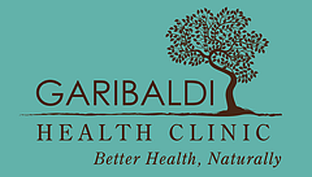Gallstones
Among the growing list of medical conditions attributable to our high-fat western diet, there is no more obvious case of cause and effect than the stones that form in the gall bladder.
Roughly the size and shape of a pear, the gall bladder lies under the liver, where it stores bile, a strongly alkaline solution that is produced in the liver and released into the digestive tract to break down fats.
Gallstones form in the bladder when there is too much cholesterol entering the liver in the bloodstream, usually because of obesity, fatty foods, low dietary fiber (fruits, vegetables and whole grains) or stress.
As the dissolving power of bile is overwhelmed, hard yellowish-green accretions of cholesterol and calcium take shape, ranging in size from a grain of sand to a golf ball. If one of these larger stones becomes lodged in the system of ducts that carries bile from the liver to the duodenum, serious damage can be done to the liver, gall bladder or pancreas. If left unattended, infection, cancer and even death can result.
The symptoms are distinctive: a sudden onset of pain under the bottom rib on the right side (hence the term gall bladder “attack”), often after a heavy, fatty meal. Jaundice – yellowing of the skin or whites of the eyes – is also indicative. If you suspect you have a stone, get medical attention immediately.
Gall stones are more easily prevented than treated. In some cases, chemicals or concentrated sound pulses will break up a stone. But surgery is by far the most common remedy, performed about 350,000 times a year in North America.
Almost invariably, the entire gall bladder is removed, rather than just the stone, even if the gallbladder is still functional. This, I believe, is not always advised. Although the gall bladder is considered to be a “non-essential” organ, it has the capacity to contract and expel a large quantity of bile into the gut on demand. Without it, the intestinal tract only receives what the liver can store and produce at that moment, which may be too little for effective digestion.
Gall stones are heavily influenced by genetic inheritance. Roughly 70% of native Indians of the Americas over age 30 have the condition, while only 10% of black women of the same age develop stones.
Simply being female, no matter what your racial extraction, makes you two to four times more susceptible than males, possibly because the female hormone estrogen suppresses bile production and increases the synthesis of cholesterol.
Other risk factors include food allergies (egg, pork, onion, poultry, milk, coffee, citrus, corn, beans, nuts), gastrointestinal diseases (Crohn’s, cystic fibrosis), and the breast cancer drug Tamoxifen. Rapid weight loss can also be a cause, as excess cholesterol is offloaded in at an increased rate into the liver.
Preventatives include lecithin, fish oils, folic acid, vitamins B12, C and E and herbs such as milk thistle, turmeric and dandelion, which are called cholagogues, because they stimulate bile production in the liver. And, important as any, drink plenty of water.
Finally, you may be wondering where kidney stones fit into all this. Actually, they are quite different from gall stones in both their causes and consequences. But that will have to wait until next month’s column.
©Dr. Ashely Gordon, 2007.

